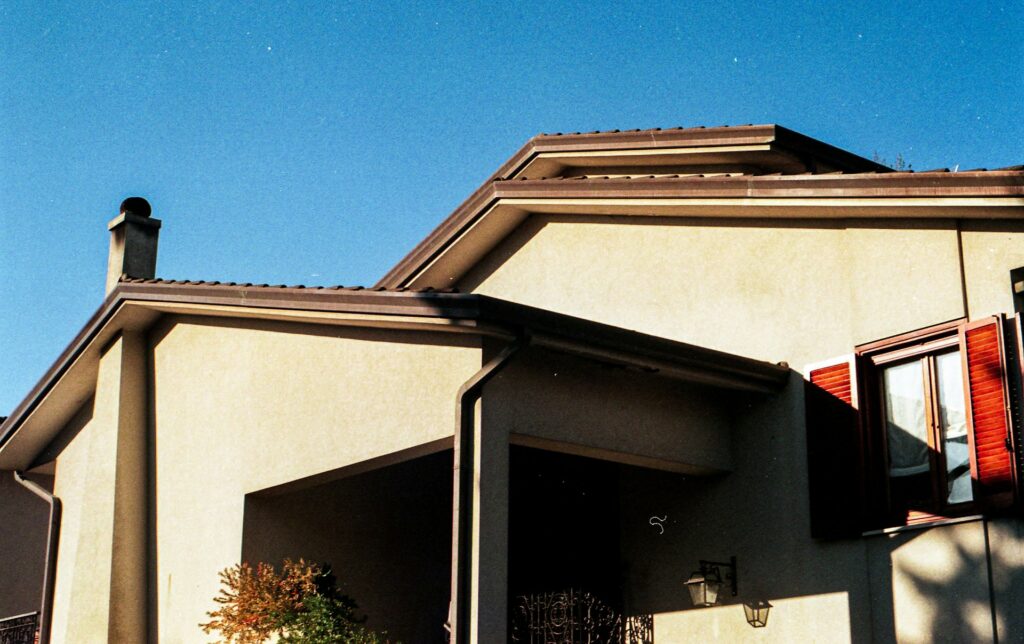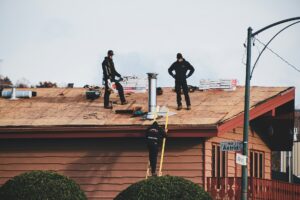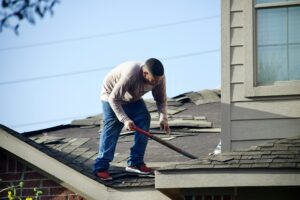Pacific Northwest weather is legendary for its abundant rainfall, tall evergreen trees, and a chilly dampness that seeps into every corner of the neighborhood. While this climate provides green forests and scenic landscapes, it also puts tremendous stress on your gutters every season
Those living in Oregon or Washington often discover that gutters are more than just a finishing detail for the roof. They form a first line of defense against water damage and erosion, ensuring that everything from your siding to your foundation stays as secure as possible. Yet, wear and tear can creep in, slowly chipping away at your gutter system until small drips become full-blown leaks, or worse
Below, you’ll discover the top seven signs that your home in the Pacific Northwest might be overdue for a gutter replacement. By spotting these red flags early, you’ll keep your property safe in the region’s wetter months and avoid larger, costlier repairs down the road
Concerned about your gutters? Contact HOMEMASTERS today to book your free gutter health check and protect your home from water damage.
Why Gutters Matter in the Pacific Northwest
Oregon and Washington collectively see a significant amount of precipitation each year, ranging from constant drizzles to forceful downpours. Even if certain areas in these states experience more moderate rainfall, the presence of dense foliage means constant debris in rooftop gutters. Left unattended, these conditions can lead to clogged gutter problems that spiral into mold, siding damage, flooding basements, and eroding foundations
- Continuous rainfall saturates leaves and twigs, creating heavy blockages
- Tall firs, pines, and deciduous trees drop needles and leaves all year long
- Moist conditions accelerate rust, corrosion, and mildew
Proactive maintenance, gutter repair Washington services, and gutter replacement Oregon options are essential in managing these local stresses. Identifying the very moment your gutters start to fail is your best bet for preventing a full-scale home repair project
Sign 1: Water Overflow and Leakage
Have you noticed water pouring over the sides of your gutters even when it’s not raining hard? Or, perhaps you’ve spotted drips where the gutters connect at the seams? These are strong indicators that your gutters aren’t managing flow as they should. In many cases, this overflow arises from clogged gutter problems, debris buildup prevents water from flowing to the downspouts. But if you regularly clean your gutters and still see these overflow issues, the gutter channels themselves may have lost their shape or proper slope
Splashes of water around the exterior of your home can stain siding, lead to mildew, and weaken the ground near your foundation. At first, a quick patch or cleaning might help manage minor leaks. Yet if you keep experiencing the same problems consistently, it might be time for a complete gutter replacement. Water that regularly overflows can wreak havoc in the form of:
- Wood rot along fascia boards
- Erosion around the base of your home
- Stubborn moisture leading to mold or mildew on tiles, siding, or the underlying roof deck
A well-fitted gutter system should streamline water flow off your roof. When it fails, the long-term damage surpasses just a few puddles on your lawn
Sign 2: Sagging or Pulling Away from the House
Sagging gutters are easier to spot than subtle leaks. If you see a gutter section bowing or pulling away from the fascia, it could be a symptom of a deeper issue. In the rainy Pacific Northwest, heavy water accumulation often weighs down old or damaged channels, dragging them away from their mounts
Although you could tighten the hardware or replace a few hangers, persistent sagging nearly always reveals structural wear, rust, or rotting fascia. Additionally, if your home has older gutters made of lighter metals, even routine rainfall can flex them out of shape over time
When gutters aren’t securely affixed, gaps can open between the back of the gutter and the fascia board, letting water run down the wall. Eventually, moisture seeps into the home’s internal structure, leading to potentially serious roof and interior damage. If you notice sagging or pulling, consider scheduling an inspection to see whether new brackets or a full replacement is the right move
Sign 3: Rust and Corrosion
Corrosion is a telltale sign of aging gutters. This form of degradation usually appears as patches of rust, especially in iron or steel gutters that have been worn down by constant contact with moisture. In a region as damp as Oregon and Washington, it doesn’t take long for untreated or poorly maintained gutter materials to develop rust. While some modern gutter systems use aluminum or vinyl to minimize this risk, older homes might still rely on galvanized steel
Rust not only compromises the gutter’s structural integrity but also points to a breakdown of protective coatings. If you spot orange-brown flakes or entire areas eaten away, it’s time to take a closer look. In some cases, sealing and patching might offer a short-term fix, but extensive rust often calls for a total gutter replacement
- Rusted bolts, screws, or brackets can give way unexpectedly
- Corroded seams weaken the entire run of gutters and create hidden leaks
- Advanced rust might spread to other home components if water seeps into the roof or walls
When considering gutter replacement Oregon or gutter repair Washington services, keep an eye out for highly durable, corrosion-resistant materials such as seamless aluminum or vinyl that can withstand the region’s moisture-heavy environment
Sign 4: Cracks and Splits
Tiny cracks in gutters seem harmless at first but can quickly expand due to fluctuating weather conditions. The Pacific Northwest sees not just rain but also occasional freezes at higher elevations. When water trapped in these small cracks freezes, it expands, lengthening or splitting the gutter. By the time spring comes, you might find significant gaps that allow water to drip all along the exterior walls
These cracks might be initially visible as thin lines on the underside of gutter channels. Over time, the cracks often widen, leading to slow leaks or even sections that break away entirely
If you spot regular cracks or splits larger than a couple of inches, a comprehensive fix involving new gutter sections may be more economical than constant patchwork. Properly sealed or replaced gutters can make a remarkable difference in how effectively your roof handles water in Oregon and Washington’s unpredictable weather
Sign 5: Peeling Paint or Water Stains
Noticing peeling paint along the gutter edges, fascia boards, or siding directly beneath the gutters is often a red flag. Typically, paint peels when exposed to prolonged moisture. Your gutters are designed to funnel water away, so any sign of paint separation suggests that water is leaking from the gutter or seeping behind it
Dark or rust-colored water stains on the underside of the gutters are also prime indicators that water does not fully exit through the downspouts. If the paint damage appears in multiple areas, it points to an extensive gutter-related moisture problem that a simple paint job won’t fix
In the Pacific Northwest, where architectural elements face year-round moisture, it’s common to see paint chipping. However, the difference lies in the pattern of chipping. If peeling is localized right around your gutter, then you know that water is moving well beyond its intended path. Keep watch for these details:
- Discolored streaks along the roofline
- Peeling paint around your home’s perimeter
- Musty or damp odors in the attic or near the eaves
When left unaddressed, these symptoms evolve into more serious structural damage, such as mold, mildew, and rotting wood frameworks
Sign 6: Mildew or Rot near the Foundation
While less obvious than surface paint damage, the appearance of mildew, algae, or actual rotting material near your home’s foundation is another urgent warning. In wet environments like Oregon’s Willamette Valley or Washington’s coastal regions, moisture accumulates rapidly where there’s poor drainage
If your gutters fail to channel water safely away, puddles can form around the foundation. Over time, repeated pooling promotes:
Algae growth on walkways or driveway edges – Mildew-laden soil around the base of your home Rot that makes its way into basement walls or crawlspaces
When moisture seeps into your foundation, it weakens structural integrity. Cracks can form, letting in even more water or pests. This cycle accelerates quickly if left unchecked. Upgrading or replacing your gutter system is one of the most effective ways to preserve foundation health and minimize repair costs in the long term
Sign 7: Frequent Clogs Despite Maintenance
Clogged gutter problems remain a top complaint for homeowners in the Pacific Northwest. Between rainy seasons and an abundance of foliage, gutters can fill up with everything from leaves and pine needles to moss. Regular cleaning is critical, but if you find yourself clearing out your gutters more than a few times a year and still facing constant blockages, it’s time to evaluate the gutters themselves
Sometimes, the channels are shaped or tilted in a way that naturally traps debris. Older systems may have multiple seams where material gathers. Alternatively, you could be dealing with downspouts that aren’t sized correctly for your roof’s surface area. If these chronic clogs aren’t resolved, water overflows on a regular basis, soaking your siding and saturating the soil adjacent to your foundation
Upgrading to a seamless gutter system or adding gutter guards can help reduce debris accumulation. Yet if the underlying structure is too worn or damaged, a full replacement might be the best solution for your home.
Pay attention to these routine hiccups:
- Debris buildup immediately after cleaning
- Gutter strain that causes water to pool
- Frequent algae or weed growth in the gutters themselves
In a region as lush as Oregon and Washington, tackling these clogs proactively is key to preserving the rest of your home
How to Choose Replacement Gutters
Once you spot these warning signs, the next step is deciding how best to address them. Gutter replacement Oregon and gutter repair Washington services often advise on different materials, such as vinyl, aluminum, or galvanized steel. For most Pacific Northwest homeowners, durability and longevity top the priority list:
- Aluminum: Lightweight, corrosion-resistant, and relatively budget-friendly
- Vinyl: Affordable and easy to install, though it may become brittle in very cold weather
- Galvanized Steel: Strong and resilient but prone to rust if coatings wear off
- Copper: Premium choice offering excellent durability with a distinct aesthetic, though it comes at a higher upfront cost
Beyond just material, seamless gutter systems are worth considering. By eliminating the typical joints where debris accumulates, seamless gutters can significantly reduce clogging and leakage. Since a professional contractor measures and cuts them on-site, you get a precise fit that works optimally for your home’s roofline
For further insight, you might look into resources like the National Association of Home Builders, which covers best practices for gutter maintenance. Or you can explore guidance from experts at This Old House to learn how different gutter guards or leaf screens can complement a replacement project
Best Practices for Gutter Maintenance in the Pacific Northwest
Whether you choose repair or replacement, consistent care is vital. Here are a few steps every homeowner in a rainy climate should keep in mind:
- Seasonal Cleaning: Clear leaves and debris in fall and spring to prevent major clogs
- Visual Inspections: Check for sagging, rust, and cracks every few months, especially after storms
- Downspout Efficiency: Ensure water channels at least a few feet away from your foundation
- Connecting with Professionals: Book periodic checkups with a trusted service for a thorough evaluation
A well-timed inspection can reveal minor issues before they escalate. Some homeowners opt for gutter guards, which can be particularly effective under tall coniferous trees. Still, even the best guards need occasional maintenance to keep every part of the system working seamlessly
Safeguarding Your Investment
Your home is a reflection of both your style and your commitment to protecting your family’s comfort. Since water damage is one of the most frequent culprits behind expensive home renovations, an unhealthy gutter system can undermine countless other investments. In the Pacific Northwest, overlooking gutter problems can lead to flooding basements, compromised roofing, and deteriorating siding
By replacing aging or ineffective gutters, you not only preserve your home’s structural integrity but also bolster its resale value. Potential buyers value a property that’s been proactively cared for, and functional gutters are a strong indicator that your home receives the attention it deserves
Book a Free Gutter Health Check Today
Not sure if your gutters are ready for the next Oregon drizzle or Washington downpour? Opportunity often arrives in the form of prevention. HOMEMASTERS’ experts are trained in gutter repair and replacement services throughout Washington and Oregon, and can assess your home’s specific challenges, whether you’re in a dense urban neighborhood or a woodland setting
Book your free gutter health check with HOMEMASTERS today.
With thorough evaluation and timely intervention, you can maintain a pristine, dry environment for your family. It’s never too early, nor too late, to make sure your gutters are fully up to the task of defending your home
By recognizing and responding to these seven signs early on, you empower yourself to stay ahead of water damage. A well-maintained gutter system adapts fluidly to the Pacific Northwest’s changeable weather, guiding rainfall where it’s supposed to go and keeping your house safe and dry. If you’ve noticed any or all of the warning signals outlined above, don’t ignore them. The sooner you act, the better your outcomes will be, not just for your gutters, but for the long-lasting health of your entire property.




